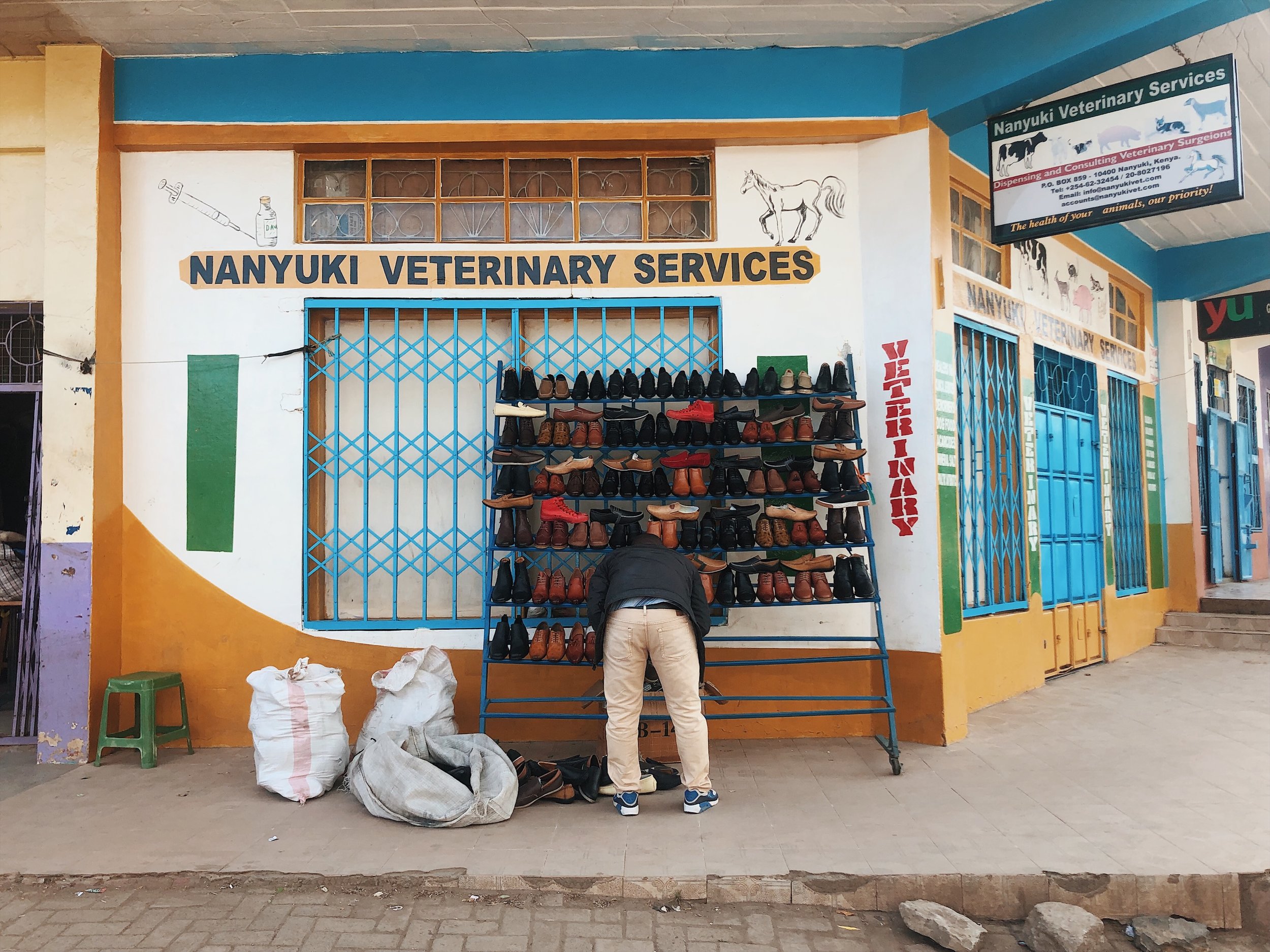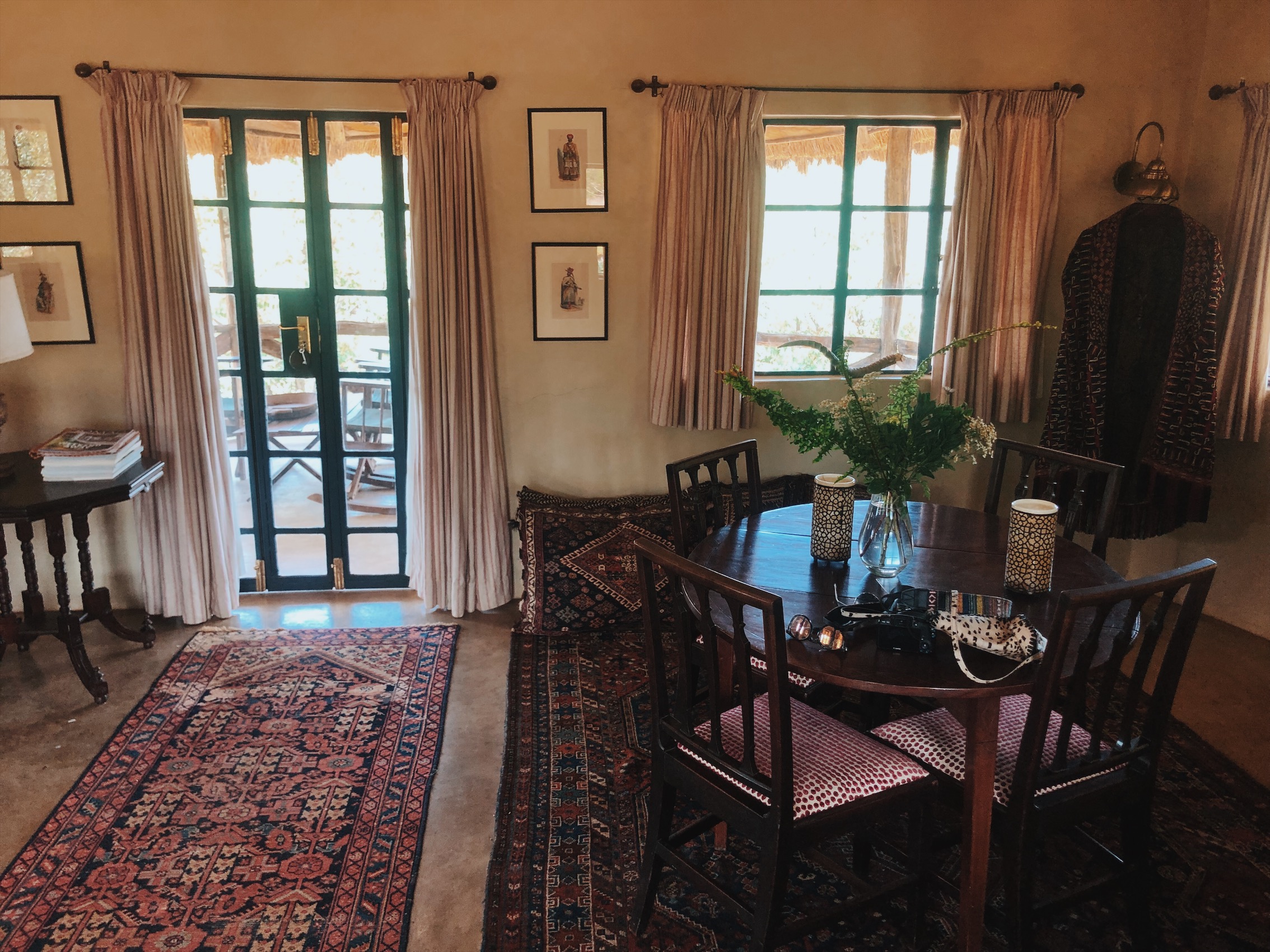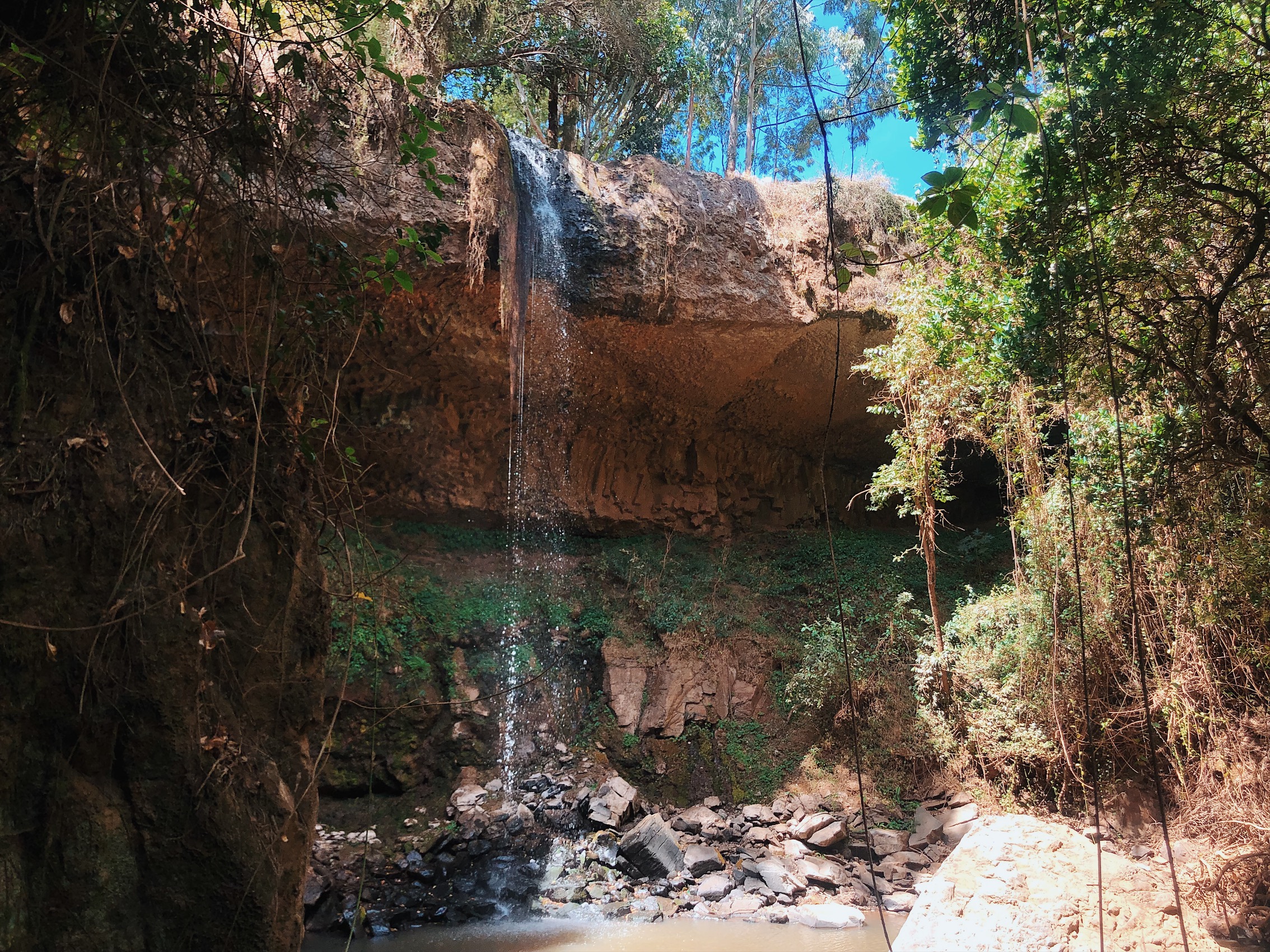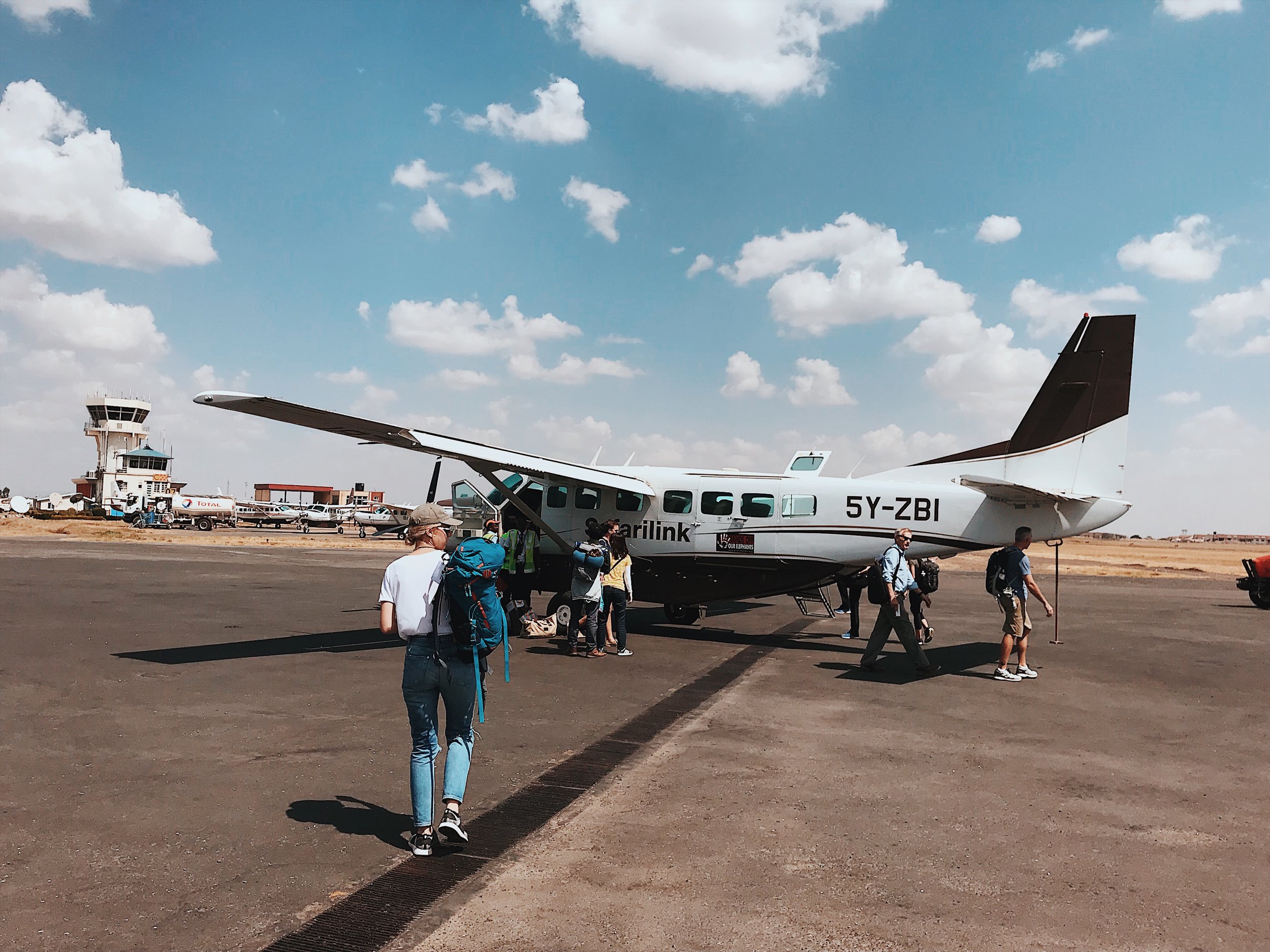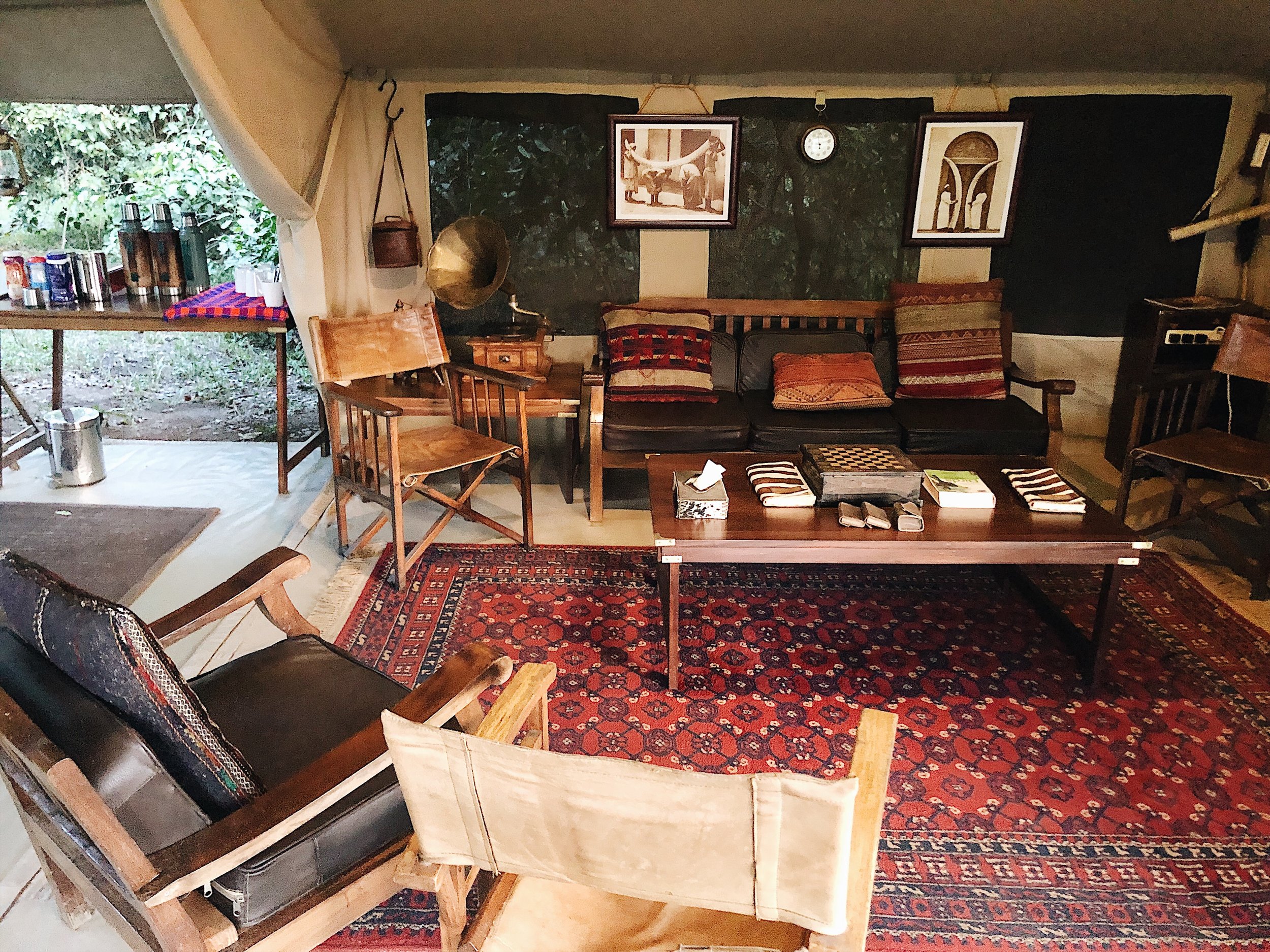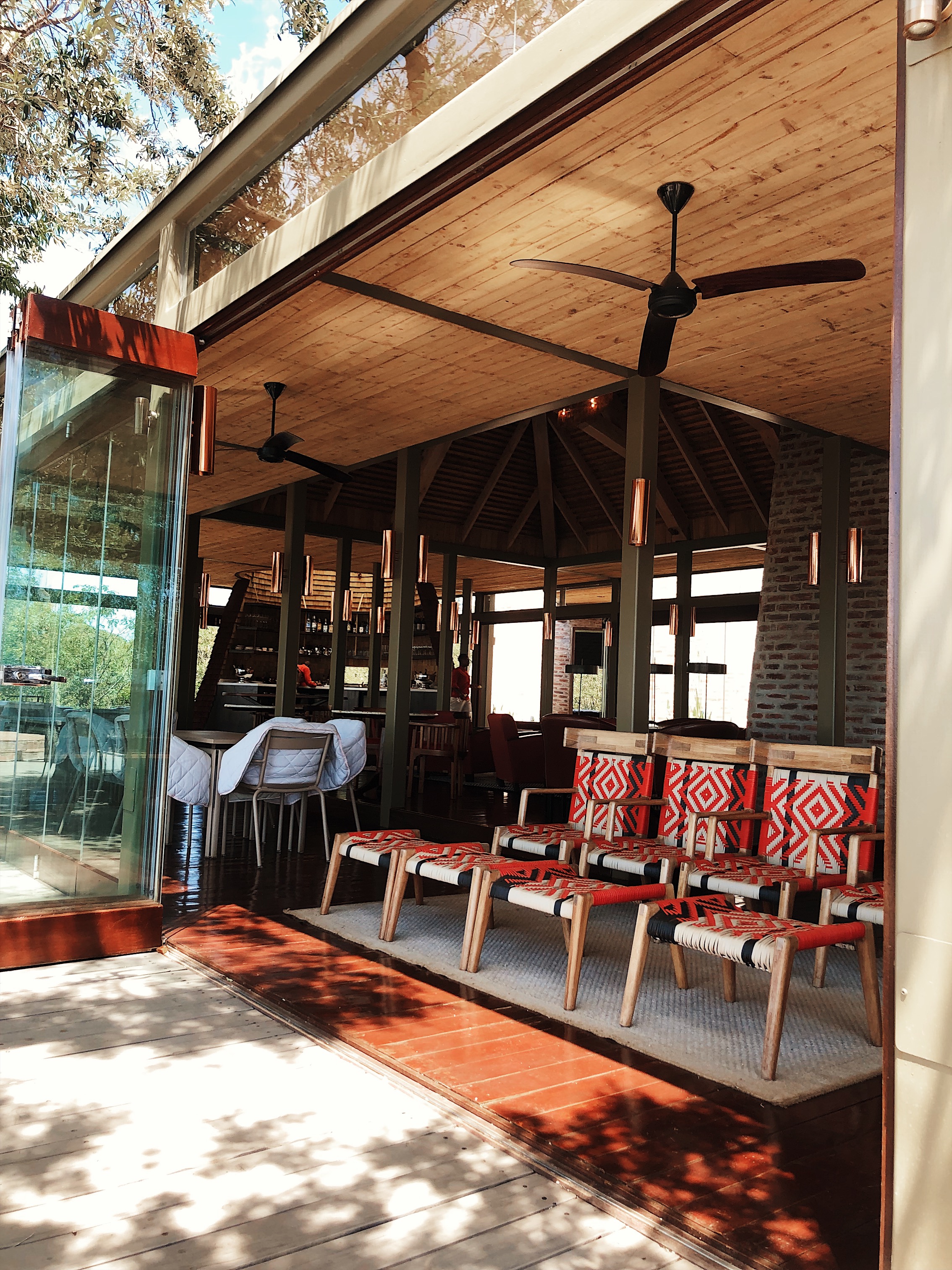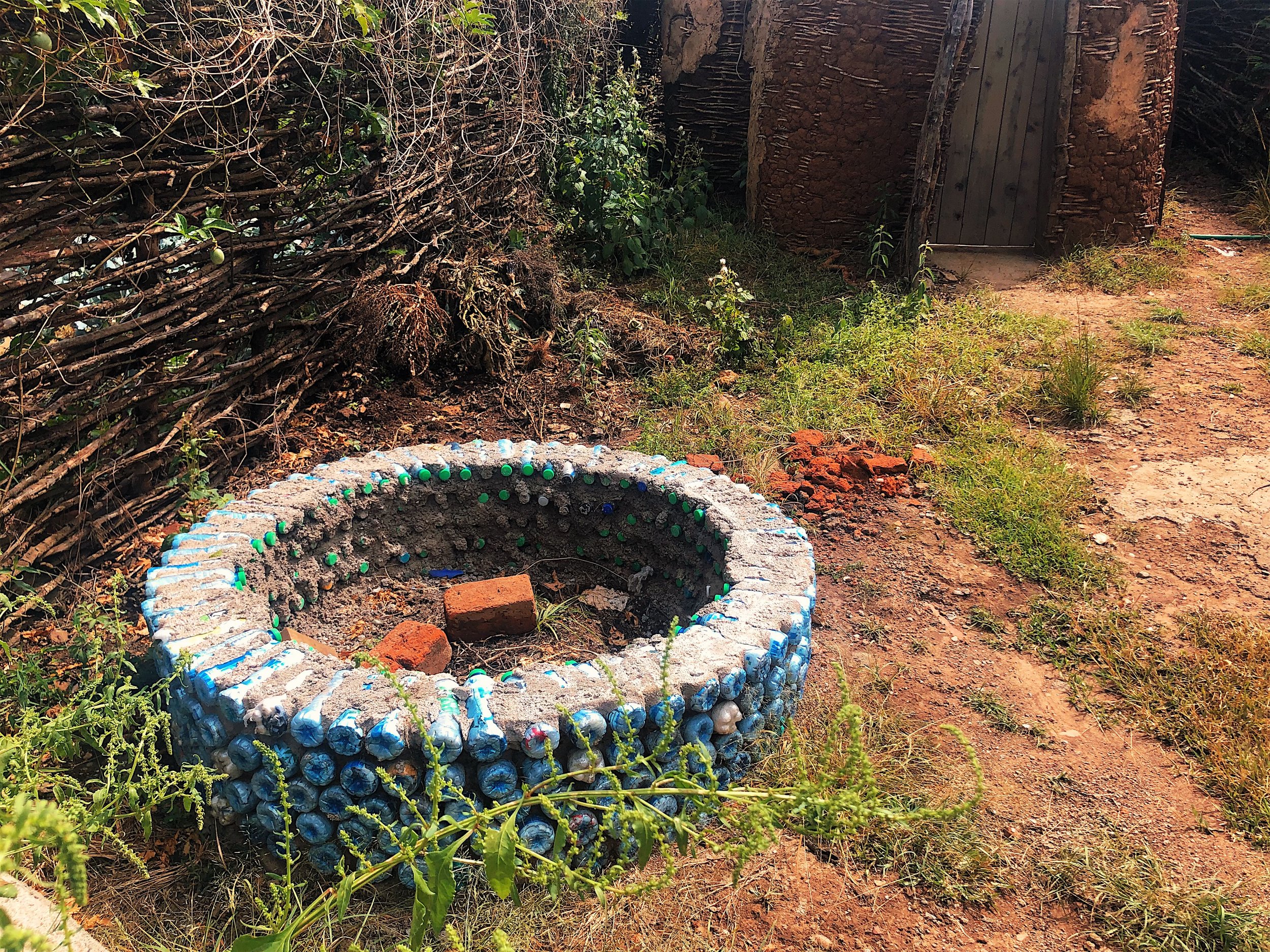As has become the theme with recent trips, we wanted the visit to East Africa to be both diverse and immersive, so as to at least get a breadth of exposure to what’s going on in this part of the world. In 2 weeks, we set out to cover three different terrains: mountains (we headed to Mount Kenya National Park & Olepangi Farm outside of Nanyuki), safari (off to the unrivaled Masai Mara), and beach (we hopped over to Zanzibar, Tanzania). In the interest of keeping these posts succinct and with the hope of doing each place justice, we’ve separated the Zanzibar portion into it’s own post.
In planning for the Kenya trip, four regions emerged as forerunners for the visit: Laikipia, Masai Mara / Serengeti, Amboseli, and Tsavo East/West. Each place is worthy of 2 weeks alone, but we had to pick just one or two for this trip. We settled on Laikipia and Masai Mara, resolving to return to Amboseli and Tsavo the next time around (a future post-Kilimanjaro visit?).
One theme that not-so-accidentally emerged from this trip was an emphasis on agriculture and farm to table food, as well as getting back to the basics of the land we live on. From farm life in Laikipia, to dining and sleeping alongside a pod of hippos, to harvesting and feasting on our own shamba garden lunch, I can confidently say that we fully immersed ourselves into the culture, land, and the creatures that run wild on it.
Laikipia / Mount Kenya Region
A bit of background
Laikipia, centered between Kenya’s picturesque Rift Valley and the windswept central highlands, is an oft-visited favorite by tourists from around the globe - including some of the world’s most note-worthy elite (Prince William & Bill Gates to name a couple; Prince William in fact proposed to Kate Middleton at the nearby Lewa Wildlife Conservancy).
The reasons for frequent visits to this region are two-fold: it’s both incredibly beautiful, but also a place with a lot of work to be done.
In recent years, Kenya’s tourism industry and conservation efforts have been threatened by violence resulting from severe limitations in resources. In 2016, a government report noted that more than 600,000 illegal firearms were circulating among pastoralists in the highland plains as a direct result of the economic strain. Just this year, amidst severe droughts, it was reported that 30,000 residents in Laikipia alone are facing starvation and in need of emergency food aid, given their reliance on water for sustenance. Weeks before our visit (and again after), fierce wildfires broke out in Mount Kenya National Park, claiming hundreds of thousands of hectares of national forest, further threatening water catchments, and imperiling unparalleled numbers of indigenous trees and exotic vegetation.
But the limited resources aren’t just natural in nature: Laikipia schools are also acutely underfunded and at risk of closing. Some schools are not even accounted for, because of poor internet connectivity. If these facts make you uncomfortable, well good, they should. It’s astonishing in many ways how desperate some parts of the world still are for resources which Westerners take for granted - and we should all be doing more to help contribute to fixing this. Many of the UN’s Sustainable Development Goals have a long way to go in Kenya, but acknowledgement of the problem is the first step. I’ve included a well-documented comprehensive background on how each applies in Kenya here.
But it’s not all bad news, and progress is in the works: as part of the defense agreement with Kenya, the British army established a training base in Laikipia in 1974, and now trains around 10,000 troops and hosts an average of 365,000 training days a year on the Laikipia Plateau. This move has resulted in an injection of more than $75 million into Kenya’s economy. Just this April 2019, Laikipia County launched a 143 million (KSH) water project, which is expected to benefit over 25,000 residents and boost production in the villages, reducing the distance women and children cover while looking for water. Farmers in Laikipia county are also multiplying their yields and doubling profits thanks to conservation agriculture, a low-cost farming technique. The technology, which results in greater soil fertility, is based on three principles: minimal tillage, permanent soil cover and crop rotation, proof that even in the most resource-restricted societies, there is real benefit to data-driven technological advances in the world of food & agriculture. More of this, please.
It’s a critical time of growth and change, and it’s important that all of us continue to monitor opportunities to contribute. And don’t get us wrong: in spite of the economic state, Laikipia is an incredibly beautiful place to visit and we found the people to be quite welcoming. They say to put your money where your mouth is, and we whole-heartedly agree: spending your $$ on a visit to Laikipia is worth it - and then some.
Where to stay: Olepangi Farm ($$)
The back story
Olepangi’s owners are the type of people that you meet once and immediately feel like you’ve known them for years. Clinton and Elizabeth, world travelers and successful business owners themselves, are a huge component of what I like to call, “the farm charm.” It’s abundantly clear that they have poured themselves into every detail, from the landscaping, to the construction and interior design, to the community itself. The way in which they (and their 3 happy farm dogs!) open their arms to every single person they meet makes guests, staff, and neighbors alike all feel like a part of the family.
What was imprinted on me immediately was the nature theme and use of biophilic design throughout the premises. What is biophilia you ask? As succinctly stated by Wikipedia, it is a “concept used within the building industry to increase occupant connectivity to the natural environment through the use of direct nature, indirect nature, and space and place conditions.” In real people speak: it’s a way of adapting the flow of nature into design, such that you feel it is almost hard to distinguish between being “inside” and “out”. As a recent NYTimes piece so eloquently stated, “biophilia, the love of nature and living things, is an essential part of the human condition.” As a huge fan of biomimicry and the idea of looking to nature for inspiration myself, this concept resonated with and immediately calmed me. I could almost audibly hear my own exhale as I stepped into my accommodations. As their website says, “step off the treadmill of life at Olepangi…” They have created a space that imparts a certain calmness and gives me the same type of coveted feeling I usually only get when standing on a mountaintop: freedom.
While a plethora of activities are available at Olepangi (safaris, horseback riding, etc.), don’t be surprised if you find yourself just wanting to stay local and enjoy the farm itself. There’s plenty to see and do, and roaming around is encouraged. A real highlight of the farm is, you guessed it: the farm itself. Newbies to the concept of farming and gardening only a few short years ago, Elizabeth and Clinton have somehow created an entire oasis which rivals the best of the local organic farms one would see back in California. When they first got started, the land, like most in the region, was overgrazed and lacking in basic nutrients. But with a bit of TLC, a red-sandy subsoil, a healthy dose of horse manure, and a nifty new drip irrigation system (technology!), they have built a successful and thriving farm from which the kitchen derives inspiration and quite a few of each meal’s ingredients to boot! I could’ve spent a whole day walking around checking out the diversity of flourishing fruits and vegetables there and was honestly quite shocked at just how many things can grow in this climate; something that surely should be leveraged to its fullest!
Guest accommodations
There are three options for accommodations at the farm: the great house (which is where the owners live), the circle house (where I stayed) and a handful of individual cottages. I trust that in coming months, the owners will only continue to expand the offerings both in volume and variety as well.
The party house
Walking with Mr. Kariuki
Remember how I said that Clinton and Elizabeth have an uncanny ability to turn neighbors and community into family? Well, it didn’t surprise me then that one of the activities to choose from was literally “a community walk with our neighbor, Mr. Kariuki”.
Sounds great in theory, right? But would it live up to expectations? With a healthy level of cynicism/skepticism, I signed up. Let’s give this a whirl. Mr. Kariuki picked me up at 9am. I agreed to the long waterfall hike (“no, I have nowhere else to be today”) and we began walking.
I quickly learned that Mr. Kariuki grew up the son of an entrepreneurial farmer, an upbringing he credits for instilling the values of curiosity, connection, and collaboration. He carried these values through into his teaching career, where he obsessed over history & learning from the past - pouring over “real books” (“I love the smell of real paper”) and finding company in his favorite authors.
We spoke about the importance of broadening ones world view, not thinking too narrow. How things that look secure usually are anything but, so you might as well take the risk. How everything is interconnected, so being too laser focused can be detrimental, as we all have a duty to find points of common ground, not points of conflict.
He shared with me his favorite authors, lessons learned and life metaphors from his favorite books. His current obsession is Yuval Harari’s ‘Homo Deus’, and he is not so patiently waiting for him to release his next novel - as “he’s the only person who is willing to speak the truth - even if people don’t like to hear it.” He also can’t get enough of Neil Macgregor (A History of the World in 100 Objects is his favorite & he emphasizes how much it makes you appreciate life’s simple things), Dan Brown, and his favorite Kenyan author, Ngugi wa Thiong’o. The names rattle off his tongue like old friends.
He has faith in some of the leaders of Africa. Others - not so much. When I ask which one he admires most, he cites the Rwandan president, because he admires the way he has turned the country’s plights and post-genocide era into a chance for new beginnings. There is a lot of forward progress. Hope for the future.
I ask how many of these walks he has been on in the last few years. “Hundreds,” he replies. I hesitatingly follow up with “so what’s your opinion on humankind after keeping the company of so many diverse individuals over the years?” He replies that they are generally good, but sometimes scarily narrow minded, stuck in their modes of thinking, & at times lacking self awareness. The recurring theme is that he wishes people would be more willing to create their own version of their lives, not the ones prescribed.
We walk & talk, stopping at a beautiful waterfall, and making a surprise visit to the local school, where I meet hundreds of kids - including several of his nephews. Their smiles are a reminder of how little we need to be happy. Now I sound like a curated tour guide. Screw it.
“What’s the biggest mistake you have ever made?” I ask, given our newfound intimacy. “I’m not a rich man, and I’ll never go far from this country in my remaining years - and I’m ok with that. I’m also okay with every mistake or misstep I have ever made. They’ve given me wisdom.” He thinks for a second and continues, “I’m a lucky man, because many people now come from around the world to Olepangi & I have the chance to go for these walks with them, and we learn from each other. I am very fulfilled. But the one regret I have is not spending the time when I had it to better educate myself. I wish I had opened my mind, and exposed myself to different ways of thinking. Now I am here in Kenya, and will probably not go far from here so have missed that opportunity.”
“But Mr. Kariuki,” I said, “maybe where you are meant to be is right here then after all - where you can both learn from others around the world who now come to YOU - and in return, you can teach them about Kenya, so that we can learn about your home, and maybe understand how to give something back. You couldn’t do that if you weren’t here. Maybe THAT is your calling.”
“Maybe,” he chuckled, “maybe.”
Masai Mara, Kenya
A bit of background
How did we choose Masai Mara over any of the other parks? Easy: because it was undisputably recommended to us as the absolute best place to visit - for culture, for animals, and for overall experience - especially for a first timer. “It just doesn’t get any better than Masai Mara,” said essentially everyone we asked. Who were we to disregard such consistent advice?
Something else that was extremely important to us was to try and do Masai Mara in both available styles: rustic “glamping,” which would bring us closest to nature and the Masai people, as well as a bit more of a “luxury” experience, where we would surely enjoy everything at its finest, but perhaps be ever so slightly removed from ground level. We felt like doing a bit of both was essential to the experience.
We found two camps which aligned well with our goal and stood out above the rest, and having now been home for a couple of weeks, I can say I would not have done a single thing differently. Both experiences were life-changing and beyond surpassed expectations.
Getting there
I spent far more time than I’m willing to admit trying to find out why on Earth you can’t just *drive* what appears to be only 6 or so hours from Nairobi to Masai Mara. But after only a few minutes on Kenya backroads while out at Olepangi, it became clear: 1) driving in Kenya is a bit like driving in the wild, wild, West and certainly not for a first time visitor to try and dip their toes into, and 2) “road” is a loose term; what may look like a road on Google Maps is often anything but. I’ve since learned that some locals do in fact drive from the city to Masai, but if you’re a tourist, just do yourself a favor and book a SafariLink flight out of Wilson airport. They’re expensive(ish) flights (~$300 round trip), but straightforward, and an enjoyable part of the experience. Try to think of it as a part of the safari itself (if you look closely, you can spot wildlife from the sky, as you soar over at 25,000 feet for 45 minutes) and write off the cost.
Do note that these flights go out of Wilson airport, which is a different airport than the Jomo Kenyatta International airport you likely flew into, but only a quick (and cheap) 30 minute Uber ride away. A friend of mine (hi Taylor!) gave me one of the best pro tips for the Wilson airport - and I’m happy to impart that advice onto our readers: get to Wilson a few hours early and run, don’t walk to the Aero Club of East Africa. Its members have over the years taken their place amongst the world’s aviation pioneers: amongst them were Beryl Markham, the first person to fly across the Atlantic from East to West; Tom Campbell Black, who won the London to Melbourne Air Race in 1934, and many other aero legends.
The place has serious top gun vibes, is a solid spot to get some grub, and boasts a helluva lot of history. Heck, my favorite part may have just been sitting at the bar chatting with the two bartenders, Frances and Joseph, who combined have been working and building lifelong friendships at the Aero Club for over 50 years. WIth a little sweet talking and finagling, you can sit in the members-only old-fashioned pub, and bask in the company of local bush pilots, military, and aerospace fanatics from near and far whilst sipping on a no sugar added ice cold White Cap. And oh yeah, all the while, planes are taking off on the runway about 500 feet away from the pub. Bonus points if you snag yourself a cap; y’already know we did. It’s the kind of souvenir that you’ll never regret purchasing.
Where to stay: Sentinel Mara Camp ($$) / Angama Mara ($$$$)
Sentinel Mara Camp
The backstory
Similar to Olepangi, the owners of Sentinel Mara Camp, Peter and Wendy Twycross, are world travelers who had already long made an imprint on the world before deciding to create Sentinel Mara Camp. They devoted their careers to the betterment of Africa and the people in it - and still co-run Business for Life, an endeavor meant to help train the poor across Africa to start their own businesses with minimum capital. Their service and support is meant to provide a tried-and-true framework which allows them to succeed. While enjoying a glass of Spanish wine fire-side with Peter on our first night, he shared with me his frustration that so many are willing to send aid in the form of financial relief to Kenya (which in many cases actually hurts, not helps), but few are willing to truly help on the ground. Peter firmly believes that we must empower people within, and that change must be tackled on an individual level - and we completely agree. His passion for the people and culture of the Masai is compelling, as is his fire for helping connect foreign visitors with this culture in the often limited time they have in Kenya.
Nowhere is this culture of diving in on the ground level more pervasive than in the set up of the camp itself. The camp provides a glamping experience, with all guest tents integrated into nature (without chopping down a single tree) and perched above a river where upwards of 30 hippos and alligators live. You can’t go more than an hour without hearing hippos either feeding, fighting, or playing - and they tend to be the most active at night, meaning you may find yourself laying in the dark for hours on end, just imagining what might be going on down below. Animals of all types would come through camp at all hours of the day which was a reminder that you were truly staying directly in the middle of the activity. You even get your own Masai to guide you through the forest at night, just in case an animal were to be lurking around a corner.
The experience
Plenty of activities are available at Sentinel, but our personal favorite was, as one would expect, the game drives (especially the early morning one which included a killer breakfast!). They’re available very first thing in the morning (don’t worry, they bring coffee and cookies to your tent before heading out), or in the evening, and often times most people opt to do both. After all, the animals are a huge part of what people come to see in Kenya after all.
Short of spotting the elusive leopard and black rhino, we saw all of the other major animals we had hoped to see - many, many times over (they’re literally everywhere, all the time) - and then some. What we didn’t expect, however, was that our bond with Dominic, our Masai guide, would be as special to us as all of the game observed on the trip. I will never forget our sundowners (a fun term for an opportunity to gather with people over drinks at sunset) each and every night just chatting about the simple things with Dom, whilst trying to better understand his culture - and how it differs from ours. I wanted to really try to *understand* the Masai people, not just gawk at them and their funny dancing/jumping.
Over one particular sundowner, our last at Sentinel Mara Camp, Dominic spoke to us about the core values of the Masai people. He elaborated that they are: 1) RESPECT. For elders, for family, for tradition. 2) FAMILY. Having children, getting married, & perpetuating the strong family unit and ties and 3) CIRCUMCISION. Yep. Still a very important part of Masai culture which in his culture takes place at puberty.
Dominic believes that despite what may seem like an old fashioned belief system, the Masai are evolving with the times, seeking employment and self education for the first time, and using that to create better opportunities for themselves & their families. He himself lives and works at Sentinel Camp, a few hours from his wife and 3 year old, but relishes in the opportunity to create better for his family and for the future generations to come.
His positivity - for himself, his family, his work, and the future - were infectious.
From special candlelit 5-course dinners to fireside chats with the owners, Sentinel manages to create a life-changing experience and prove that less is, in fact, more.
Angama Mara
The backstory
Angama is derived from a Swahili word which means “suspended in mid air,” and the name couldn’t be more fitting. On our way to Angama from Sentinel, we did a *lot* of uphill driving and it became immediately clear that we were about to be perched on the rim of the Great Rift Valley, looking down on the entirety of the Masai Mara (Angama sits at 5600 ft, to be exact), with 360 degree views of the majestic landscapes and animals below. What a different perspective from our one on ground level, literally hippo-side! This reinforced our decision to do both experiences, as they each offered something completely different - but both impeccably good on their own merit.
Now, Angama otherwise needs very little introduction as it has been consistently named as one of the world’s absolute best and is frequented by celebrities and wealthy every year. It’s resume speaks for itself: Robb Report Best of the Best, Travel & Leisure IT List, Afar Traveler’s Choice Awards, Conde Nast Travelers Readers Choice Awards… the list goes on and on. And for good reason.
What impressed us the most though came down to a few key things not often accounted for in the above accolades: 1) innovation and out of the box thinking, 2) sustainability / efforts to give back, 3) attention to food as experience. Let’s break each one of these down individually.
Innovation:
Steve & Nicky Fitzgerald, the founders/owners of Angama are industry vets and well known for their considerable experience developing and operating safari lodges. But what delighted me most was meeting the husband and wife co-managers of Angama, Tyler and Shannon. Transplants from Seattle, and longtime Africa-thusiasts, they essentially convinced Steve & Nicky to take a risk on them to manage Angama, with very little direct industry experience.
Why is this both important and delightful? Because from our experience, far too many places are run in a cookie-cutter manner and inside the box, which prevents them from really innovating, thinking creatively, and most importantly, having the right mind for the most important person: the guest. Tyler and Shannon are equally inspired and each bring their own special potion to the mix. They have quite literally poured their souls into Angama, which is abundant in every interaction not only with them, but with the staff which they have individually hired and trained. They’re the kind of people that you catch yourself almost actively not wanting to spend too much time around, because you find yourself just wishing they were your best friends. If only all resort managers gave you that feeling! Steve and Nicky made the right call by trusting these two with the place - as they have created a magical, innovative, & always-evolving experience.
Giving back:
The Angama team subscribes to Benjamin Franklin’s oft-quoted saying: ‘Doing Well, by Doing Good / Doing Good, by Doing Well’. This has been a philosophy successfully adhered to and implemented by the owners the past 20 years. And Angama puts their money where their mouth is. They’ve created Angama Foundation, a separate entity which has been setup in order to affect efforts in three fields: Education, Healthcare and Conservation. Projects are identified and prioritized together with the lodge’s neighbouring communities, the Mara Conservancy, and partner NGO’s who have a track record of making an impact in the region. When we would ask many of the staff we worked with over our few days there, they were commonly from one of the local villages and could directly point to something the foundation was doing to materially impact where they grew up: whether it be the education system, farming practices, or general support of resources.
There is also a very dedicated effort and plan to employ many sustainable practices on site, but we will get to a bit more on that in just a second.
Food as a vehicle:
As a big proponent of food as a healing mechanism for the body, as well as an excellent vehicle for bringing people together, I was beyond impressed with how Angama weaved food into the overall experience. Aside from the 5-course cuisine at the restaurant for all 3 meals (which were so good I’ll be thinking about them for months if not years), Angama understands that food plays such an important role in a person’s connection with a place - and they fully embrace this.
Kiswahili for vegetable garden, the “shamba” is a much-loved experience for Angama Mara’s guests - and was by far our favorite experience of the entire trip. Steve and Nicky enlisted an army of people to create a farm which would not just serve as an on-site source of food, but would deliver an immersive *experience* and mechanism for guests to connect with the land itself. Given the growing interest and connection with food and from where it comes, we thought it was incredibly important and savvy for Angama to introduce this immersion to guests in the form of an activity/experience. We’ll also dive into that more below.
The experience
We opted to do a number of game drives while at Angama, but were equally excited to just embrace our surroundings and take part in the plethora of experiences available on site. (With a widespread campus, Angama boasts its own shamba garden, soccer and volleyball fields, swimming pool, photo workshop, and even airport which we highly recommend you fly out of it, as we did; it’s conveniently called the Angama airport.)
When we did actually leave our humble abode perched above the Rift Valley, we particularly enjoyed our game drive out to the Serengeti, which allowed us to dip into Tanzania, and see an entirely new and different landscape from the one we had been exposed to the prior few days in Masai Mara. We were truly shocked at how different just a couple hours in a different direction could make; the animals were different, more abundant in some places, less in others, and the landscape looked as though we had stepped onto a different planet. It left us wanting to explore even more.
Outside of the game drives, by far the best experience (of the entire trip!) was the shamba lunch, where we spent an afternoon with James, who runs the garden day to day. While on a garden tour, you then select your own lunch to be prepared for a meal in a beautiful setting which rivals a movie setting. If you want a micro experience of walking through the Angama shamba yourself, just take a look at this video, which captures only a portion of its essence.
As a follow on to the trip, I had the privilege of connecting with one of the lead designers of the shamba, Ian Dommisse, who shared how he has fused his architectural training with his love for working with plants and soil. It’s a mix that works well, as the shamba achieves a perfect blend of harmonious atmosphere and thriving produce, with an eye on sustainability to boot.
One of the most impressive formations in the garden (here’s where we’re getting back to the sustainability bit) was an ecobrick raised garden (you can learn more about this concept here), a garden structure created using one year’s collection of plastic trash which is thereby subsequently integrated into the rest of the premises. Talk about circular economy at it’s fullest!
Angama is also very diligent about their composting and waste practices, reflecting their value system throughout every single layer of their operations. But enough about that: can we talk for a second about how divine eating an abundance of freshly prepared, hand-selected foods was in the very environment they came from, paired with a lovely crisp South African wine? It was a meal I will not soon forget.
Our experience at Angama proved that you can provide a bit of luxury for the vacationing traveler who wants creature comforts (hello, open bar!) whilst not losing touch with the entire purpose of the experience itself.
A few final important tips we wanted to pass on…
Unless you are traveling to other areas in Africa which are more susceptible, you likely do not need to be taking anti-malarial pills. I made the mistake of not looking into this fully, and suffered extensively with side effects from medicine that I didn’t even need to be taking. At the elevation of Laikipia and Masai Mara, mosquitos are hardly even existent. Of course, we aren’t doctors, so please confirm conditions before taking a trip, but take into consideration.
We acknowledge fully that this is overall not a trip that can be made super cheap. There are unavoidable expenses such as the bush flights, entry fees into parks for safaris, etc. But we did opt to consolidate our game drive days into a few (where we went out multiple times a day) so that we didn’t have to keep paying the daily park entry fees (which run around $80 per person per day). Would recommend you do the same if you want to cut a couple hundred dollars out of the trip.
Don’t be afraid of visiting during shoulder season, on the cusp of, or even during rainy season. We went just as it was turning to rainy season and we were rained on once - lightly. Besides, even in the peak rainy season, it will consistently rain for a couple hours in the afternoon but otherwise be completely dry and perfect conditions for activities - a common misconception by non-Kenyanas which sadly keeps people from visiting during some of the most beautiful parts of the year!
Most sockets are the same as Euro sockets. Plan accordingly.
We didn’t get a chance to explore Nairobi at all despite having taken the time to research it. If you spend some time there, here are a few spots we definitely would have visited: Giraffe Center, Boho Eatery, Fonda NBO, Mama Rocks, Tin Roof Cafe, Bao Box Cafe, Nyama Mama, Urban Eatery, Mercado, and About Thyme. NY Times just put out a fun article on some of the latest and greatest in Mexican cuisine/culture in Nairobi here.
We also had planned to climb Mount Kenya during the trip, but had to defer until the next time around. We did however get a chance to spend some time with our future guides and they were impeccable. If you’re looking for one, contact Polemark Tours and try to spend some time with the impressive Joe if you can. You won’t regret it!
Beware of Kenya addiction, because it’s real and it’s rampant. You may find yourself never wanting to go home. Don’t say we didn’t warn you.




